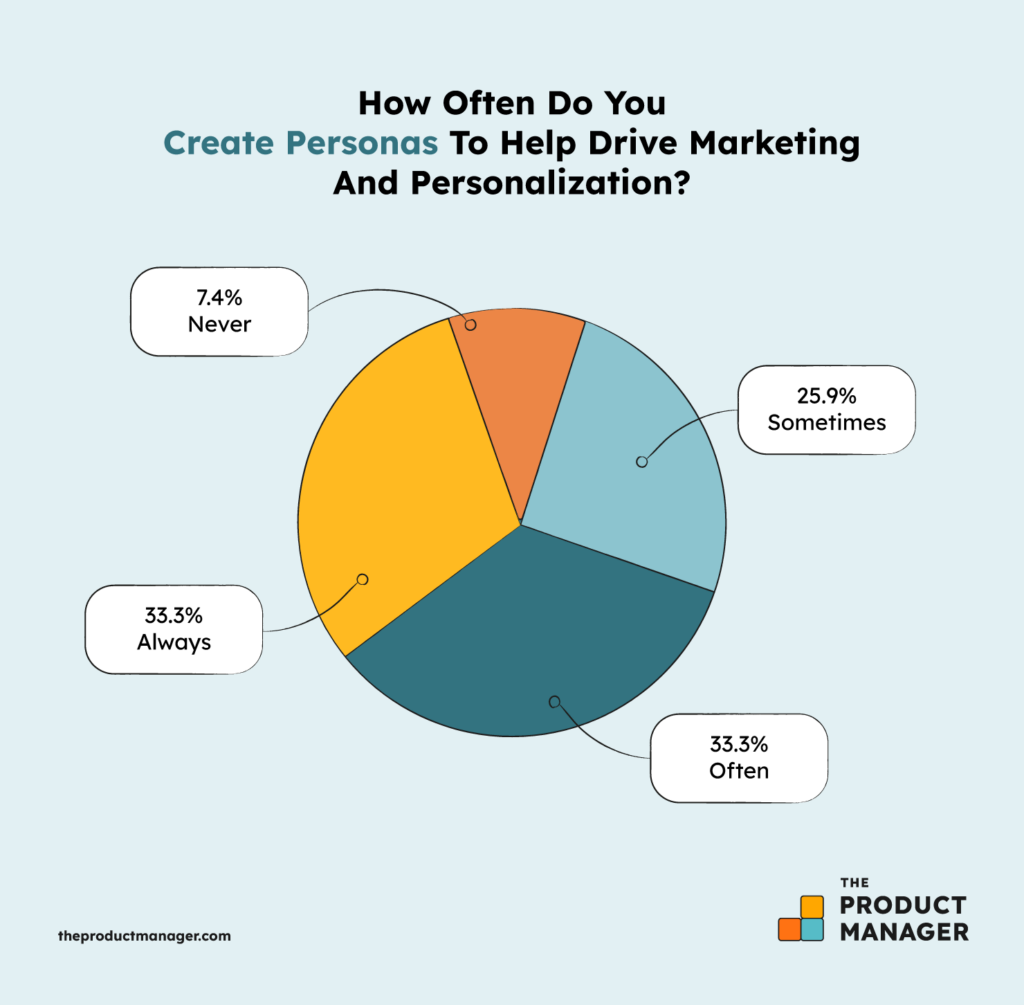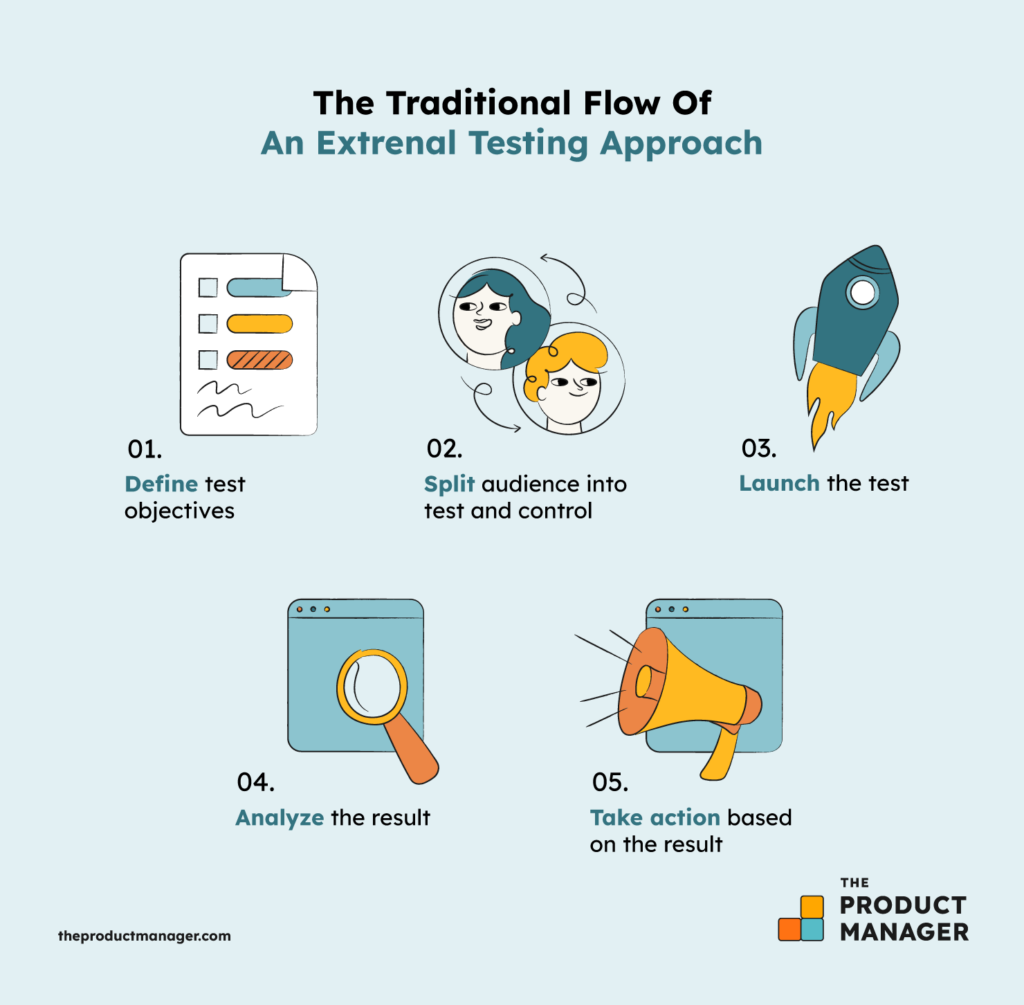The tech world anticipates every Apple event with rapt attention because the company uses this blockbuster occasion to unveil new products and innovations.
But why does a multinational giant like Apple need a press release or event to market its products?
The short answer: more sales. But if we really get into it, new product marketing is essential to any business, regardless of company size or industry. You need to include a marketing strategy that covers ideation, innovation, market analysis, testing, launch, and post-launch with your product strategy.
If you don’t pay enough attention to one of these essential stages, your company will struggle to recoup expenses, leading to net losses on products.
In this article, I discuss the role of marketing in new product development (NPD) and best practices for test marketing and positioning your new product correctly.
Why Is Marketing Important In The New Product Development Process?
Your product development strategy is incomplete without a marketing strategy focused on potential consumers. You cannot make any significant return on investment if you don’t generate the right leads.
Here are some reasons why you need marketing in your new product development process.
- Helps to understand your audience through buyer personas and user stories
- Provides information about target market and competitors
- Encourages flexibility in idea generation and implementation
- Puts the entire company on the same page
- Improves lead generation and conversions
- Distinguishes your product with a unique value proposition
When to Initiate Marketing in the New Product Development Process
Every product development cycle happens in stages, which move from generating a concept to finalizing a market-ready product. But the one-million-dollar question involves identifying the best stage to start implementing your new product development marketing strategy.
In that case, let’s identify the non-skippable stages in new product marketing:
- Idea screening
- Aligning the final idea with business objectives
- Analyzing the target market (competitive analysis)
- Creating a product design or prototype
- Creating the product
- Concept test (new product testing)
- Launching
- Commercialization
You can start the marketing process at any stage, depending on your company’s overall business strategy. In some cases, the product itself can dictate the timing of marketing initiatives.
For example, say you want to start marketing activities for a new product idea. But even before that, you should present an MVP to a focus group, involve potential customers in the process by asking them about their previous experience with similar or existing products, behaviors, and preferences.
By involving the audience in the early stages, the marketing team can acquire valuable intel to create the marketing strategy. Such feedback is also beneficial for your business analysis.
Related Read: 10 Best New Product Development Software For 2023
How to Create a Marketing Strategy for New Product Development
We’ve discussed why new product development marketing strategies are important and the product development stages. Now it’s time to get down to the nitty-gritty of creating a marketing strategy for new product development. A successful marketing strategy must ensure the product is user-oriented and allows for multiple changes in response to market trends.
Before diving into the creation steps, let's understand the difference between a marketing strategy and a go-to-market strategy.
Marketing Strategy Vs. Go-To-Market Strategy
Most companies use a universal marketing playbook for every new product. Although this approach is effective, it ignores market volatility and changes in consumer behavior.
If left unaddressed, these changes could lead to pitfalls and massive losses incurred during the new product development process. 90% of companies unable to establish a suitable go-to-market strategy fail. To avoid these losses, your company needs a go-to-market strategy for every new service.
A go-to-market strategy is a product-specific marketing approach that focuses on fast-paced implementation to meet market demands. Since this particular model is rigid and time-sensitive, your company must prioritize deadlines for every stage of new product development.
A marketing strategy is more focused on things like the target audience, a strong value proposition, and reaching the target audience.
Essentially, it all comes down to what suits your company at a specific period. Consult your marketing experts to determine the most lucrative marketing model for your new product.
But first, let’s create a framework that factors in the entire product life cycle.
Sounds like a lot to digest. So, let’s break it down into the stages in the NPD process.
1. Brainstorm A New Idea
The journey to product launch begins with a new product idea and shaping a product concept. In most companies, ideation rests on the shoulders of a cross-functional team of marketers, product managers, and product owners.
With that in mind, your company needs a centralized idea cache for every product initiative. You can also extend idea generation to your audience by asking for feedback or general ideas, as part of the marketing campaign. And here, a marketing team can help with choosing the correct channels to present the initiative and set up the flow smoothly.
However, sifting through swathes of ideas can hinder concept development, hence the need for idea screening. Besides, every product idea sounds good on paper, but very few ideas will attract the interest of investors in today's post-pandemic reality. A marketer’s role is to collect suggestions and inquiries and shape raw concepts, and then, a cross-functional team brainstorming session can be held.
Normally, a product development team should have a dedicated representative from marketing.
For example, you’ll need the input of expert designers with design thinking skills when working on a website or mobile app. The expertise of designers helps shape product proposals and raw concepts into more realistic potential products.
The role of marketing teams at the brainstorming stage is valuable. They can support the process by being knowledge holders or idea presenters and validators. Marketing teams can also provide insights on how a new product may fit the market, how to promote it, which approaches to use, evaluate obvious challenges with an NPD market launch, and more.
2. Define Your Target Audience
Now that you have pinned down a new idea (or a few ideas), you need to conduct marketing research to identify a target market for the new product. Reach out to your potential customer or established customer base and seek their opinion on the new product idea.

Information from questionnaires, forums, and surveys can also help you determine the target audience. From this, you can create buyer personas and user stories that aggregate the following demographic data:
- Average age
- Location
- Income
- Marital status
- Gender
Eventually, you can conduct a well-informed market segmentation procedure. You can also conduct competitor research by using a SWOT analysis to determine the best way to position your product.
3. Specify The Value Proposition
Once you have an idea and a target audience in mind, start working on the value proposition — the product’s purpose.
- What are the product’s core benefits to the customer?
- Is this a new product idea?
- Are you revamping an existing product?
Apple uses a marketing mix that combines the improvement of existing products alongside product innovation. This technique is effective because it maintains the same level of familiarity while ushering in a completely new product.
On the flip side, Tesla rolled out the new Cyber Truck with a novel working prototype, albeit a disaster of one. Notwithstanding, your company can emulate this model by producing a usable prototype or beta version for users.
4. Shape A Marketing Strategy
With the product almost ready for launch, you need to start thinking about the best marketing strategies for your new product development process.
(If you're new to creating marketing strategies, I strongly recommend starting with a few product marketing books by accomplished professionals in the field.)
From the information gathered during market research and competitor analysis, you can decide on the best product positioning strategy.
This stage in the product roadmap is critical in terms of sales and conversions. You need to create a compelling brand message to drive your marketing campaign. So, the product manager and the marketing team must collaborate to generate a product story that resonates with the target audience.
This story can be adapted to suit various marketing channels and sales funnels. Prepare to diversify your lead generation with SEO, email marketing, social media marketing, organic searches, native ads, public relations, and more. To increase ROI, combine these tactics as they relate to your target demographic.
Related Read: 10 Best Product Marketing Tools For Your Marketing Strategy [2023]
5. Testing And Product Launch
With your marketing strategy in place, start finalizing the product launch. Your product development software will be critical in managing these stages, as they can get messy very quickly. As a marketer or product manager, you must prioritize an internal concept test before releasing the product to the public.
Why is an internal test necessary?
First of all, concept testing allows your company to visualize potential flaws in the design and realization of the product. For instance, testing will enable you to detect flaws and compatibility issues with your product — something Elon Musk probably forgot to do with his Cybertruck.
During internal concept testing, a marketing team usually helps with these areas:
- UI polishing from a design standpoint
- UX evaluation, e.g. you can conduct customer development sessions where marketers will evaluate product features, ease of use, and more.
- customer acquisition
- competitive/market pricing analysis
- marketing materials (promos, landing pages, onboarding approaches, and more)
- feature comparison and promotion in relation to direct competitors
Meanwhile, the product and dev team is responsible for the deployment of tech improvements resulting from UI/UX tests, the establishment of the required website/app architecture to integrate marketing materials, and documentation. So the efficiency of internal testing depends on the collaborative efforts of cross-functional teams.
Additionally, you can involve focus groups to do external testing. For this, you need an MVP or beta version of your product. Look at the features of your product development software to see what it offers in the testing/launch areas. This is a critical component to ensure product launch success.

Next, you need to establish a pricing policy and test it before rollout.
- Is the pricing below or above the market average?
- Will the company recoup expenses after sales?
- Which sales funnel will generate the most leads and conversions?
Once you’ve settled on pricing and are satisfied with the product, you can now show the product to a focus group and push it to the marketplace.
6. Measure Success
The post-launch analysis is a critical product development stage, especially when working on a new product concept. You want to monitor the product’s reach and overall market success. Some produce development tools have this built in! Or, you’ll probably want a dedicated intelligence suite.
Use product-related KPIs to monitor impressions, conversion rates, bounce rates, and other valuable metrics. This data will help you fine-tune your marketing strategy for the product moving forward.
R.G. Cooper emphasizes the involvement of cross-functional teams as one of the critical drivers of new product development. You should create a cross-functional team not only to cover the development process areas but to monitor customer feedback/engagement for further improvements. Don’t forget to collect information from multiple users through social media and customer support.
Eventually, this critical success factor will facilitate your company’s post-launch product improvements, like updates and patches. You can also use the data to start a new retargeting campaign for the same service.
This stage completes the new product development and marketing cycle.
Final Words
Creating an airtight marketing strategy for your new product is essential to improve sales. But you must apply the right marketing plan and continue to adjust it to match ever-changing market demands. Also, you need a go-to-market strategy for your product to reduce the estimated time to launch.
What do your marketing strategies look like for new product development? Let us know in the comments.
For more actionable insights in product management, sign up for The Product Manager newsletter.
Ready to learn more? Check this podcast out: Future Trends In Product (with CK Hicks and Scotty Moon from Crema)
Related Reads:
- 10 Best Product Marketing Tools For Your Marketing Strategy [2023]
- 4 Biggest Myths In Product Development & How To Avoid Them



